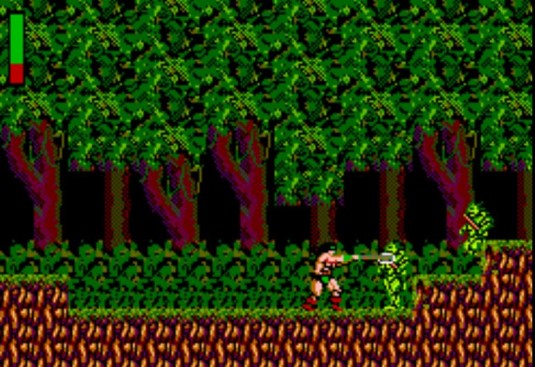
- Rastan arcade vs master system full size#
- Rastan arcade vs master system software#
- Rastan arcade vs master system Pc#
It also is a prime example of leniency shown to video games before the formation of the ESRB. Though not particularly violent, Rastan was one of the earliest platform games to feature a blood effect when certain enemies were defeated. Rastan also made an appearance in another Taito game titled Champion Wrestler as "Miracle Rastan". Since this game was not originally created by Taito, and since it originally didn't have Rastan or any other related characters, it actually has no connection to the Rastan universe. The game was released in Europe later that year. In 2003 the game was licensed by Taito and was retitled "Warrior Blade: Rastan vs.
Rastan arcade vs master system software#
In 2002, Saffire created a 3-D fighting game published by Titus Software for the PlayStation 2, and Nintendo GameCube in the U.S. The game was followed by two sequels, Rastan Saga II (also known by two other names, Nastar in Europe and Nastar Warrior in North America) and Warrior Blade Rastan Saga Episode III.
Rastan arcade vs master system Pc#
In addition, the arcade version of the game was included in Taito Legends, a compilation of games for the PlayStation 2, Xbox, PC (2006). The Apple IIGS version, one of the last ports to be written, was well regarded as it was the closest in matching the arcade original graphically, in terms of fluid animation, music and sound. The ZX Spectrum version was awarded 9/10 in the July 1988 issue of Your Sinclair and was placed at number 54 in the Your Sinclair official top 100. This bug prevented a player from making a critical jump from one platform to the other - Rastan would always fall short of the intended point and could never make it across. The Commodore 64 version of the game, called simply Rastan, was impossible to finish because of a bug early in the game. Ports of the game were developed by Taito themselves for the Sega Master System (1988), MSX (1988) and Sega Game Gear (1991), and by Ocean Software under their Imagine label for the PC (1990), Commodore 64 (1987), ZX Spectrum (1987), Amstrad CPC (1988) and Apple II GS (1990). In it, the game explains that he would be given all the treasures of an empire for exchange of a terrible dragon's head. The original opening to the story was not included in the North American nor the European version of the game. Instead, the game was released as a "kit" conversion a kit conversion allowed the arcade operator to convert an existing game cabinet into the "kit" game by providing new buttons, joysticks, decal stickers, marquees, monitor bezels, wiring harnesses, manuals, and the game PCB.
Rastan arcade vs master system full size#
Unlike the Japanese version, the North American and European versions were never released as a full size dedicated cabinet in the arcades. The game's background graphics featured broad landscapes with changing sunlight effects with detail and clarity not previously seen in video games.

Some weapons and items include axes, hammers, fire swords, jewels, shields and mantles. The player can pick up new weapons by stabbing them with the sword and items by walking over them.

To clear each round, players must reach the third scene and defeat the castle boss.

The game consists of six rounds with three scenes per round. The player controls the barbarian named Rastan, who has to cross a number of levels and defeat enemies inspired by Greek mythology while avoiding obstacles and traps.


 0 kommentar(er)
0 kommentar(er)
